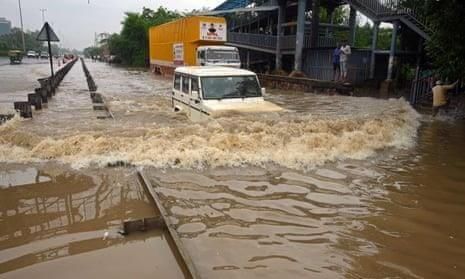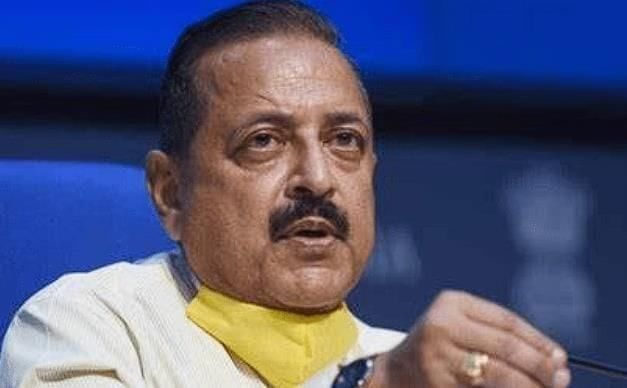Weekly Current Affairs (15th to 21st July 2025) | General Test Preparation for CUET UG - CUET Commerce PDF Download
India Launches First Weather Derivatives Market
 Why in News?
Why in News?
- On July 15, 2025, India made a significant advancement in climate risk management by inaugurating its first weather derivatives market. This initiative was launched through a collaboration between the National Commodity and Derivatives Exchange (NCDEX) and the India Meteorological Department (IMD). The introduction of these financial instruments aims to help various stakeholders, including farmers and businesses, manage uncertainties related to weather.
Key Takeaways
- India has launched its first weather derivatives market.
- NCDEX and IMD partnered to introduce these financial tools.
- Weather derivatives help hedge against weather-related risks.
Additional Details
- What Are Weather Derivatives? Weather derivatives are financial contracts whose value is determined by specific weather conditions, such as temperature or rainfall. Unlike traditional insurance, which compensates for actual losses, these contracts manage recurring weather-related risks.
- Key Weather Variables Traded: The primary variables include temperature (measured by Heating Degree Days and Cooling Degree Days) and precipitation (tracked via cumulative rainfall totals).
- How Weather Derivatives Work: These contracts trade on numerical weather outcomes. For example, a rainfall futures contract pays out if precipitation falls below a predetermined amount.
- Distinction Between Weather Derivatives and Insurance: While insurance covers significant asset losses, weather derivatives protect against frequent, less severe risks that impact revenue streams.
- Benefits for Stakeholders: Farmers can secure funds against poor monsoon rainfall, businesses can safeguard against demand fluctuations due to weather, and banks can protect loan portfolios from defaults related to weather conditions.
- Impact on Climate Risk Resilience: The establishment of a weather derivatives market fosters proactive risk management, moving the focus from disaster relief to risk mitigation. This encourages investments in agritech and climate forecasting.
This initiative promises to enhance economic stability and adaptation to climate change, marking a pivotal step in India's approach to managing climate-related risks effectively.
India’s Path to 70% Round-The-Clock Clean Electricity
 Why in News?
Why in News?
- India is on track to achieve 70% round-the-clock (RTC) clean electricity for commercial and industrial consumers by the year 2030. This initiative is projected to be more cost-effective than traditional methods of annual clean energy procurement. A recent report by TransitionZero, a global climate analytics non-profit, highlights the potential benefits of deploying 52 GW of RTC clean electricity capacity, which could cater to 5% of India's anticipated national electricity demand and save approximately ₹9,000 crore ($1 billion) annually for the grid.
Key Takeaways
- RTC clean electricity will ensure continuous power availability from zero-carbon sources.
- The RTC model can significantly reduce carbon emissions compared to annual matching strategies.
- Heavy industries and data centres will experience substantial benefits from RTC clean electricity.
- Effective grid planning and market mechanisms are essential for the successful implementation of RTC electricity.
Additional Details
- Round-The-Clock Clean Electricity: This concept involves providing electricity that matches every hour of demand with power generated from zero-carbon sources, such as solar, wind, and battery storage. Unlike traditional annual renewable energy certificates, RTC ensures a consistent supply of clean energy throughout the day and night, promoting genuine decarbonization.
- Cost and Emission Benefits: The RTC approach can lead to a 2.4% reduction in emissions at 70% matching, and a potential 7% drop at 100% matching. Additionally, the cost of carbon abatement through RTC is nearly three times lower than that of annual matching, making it a more efficient and economical choice.
- Importance for Heavy Industries: Industries with continuous electricity demands, such as heavy manufacturing and data centres, stand to gain significantly from RTC clean electricity. For instance, Maharashtra, which hosts India's largest data centre cluster, is particularly positioned to benefit from this clean energy transition.
- Grid Planning and Market Implications: Promoting RTC clean electricity procurement is crucial for cost-effective grid planning and could provide significant savings for grid operators. It encourages the development of a sustainable market for renewable energy power purchase agreements (PPAs).
- Role of Energy Storage Technologies: Battery storage, particularly 4-hour lithium-ion batteries, is critical for maintaining RTC clean electricity supply. Each MW of solar energy requires about 2 MWh of battery storage to ensure stable night-time supply.
- Policy and Future Outlook: Regulatory updates, such as the Greenhouse Gas Protocol's revision of Scope 2 guidance, will increase the significance of RTC clean electricity for ESG-compliant companies. TransitionZero suggests implementing clear incentives and flexible market mechanisms to encourage real-time clean energy utilization.
The transition to RTC clean electricity is viewed as a strategic move for India's energy planners, grid operators, and corporations. It supports the nation's ambitious goal of reaching 500 GW of non-fossil fuel capacity by 2030, making it a crucial element in India's energy strategy.
India Receives Second GE-F404 Engine for LCA Tejas
 Why in News?
Why in News?
- On July 16, 2025, India received its second GE-F404 engine from the United States as part of the Light Combat Aircraft (LCA) Mark-1A programme. This acquisition is a significant milestone in bolstering the Indian Air Force (IAF) with domestically produced fighter jets, even as supply chain disruptions caused delays in previous deliveries. Hindustan Aeronautics Limited (HAL) is tasked with the integration of these engines into the Mk-1A jets.
Key Takeaways
- India received the second GE-F404 engine in July 2025.
- A total of 12 engines are expected by the end of the financial year.
- HAL has placed an order for 99 engines worth ₹5,375 crore with GE Aerospace.
- The IAF has ordered 83 LCA Mk-1A jets, with plans for an additional 97 aircraft.
Additional Details
- Delivery and Procurement Status: HAL received the second engine in July 2025 as part of a larger order for 99 engines, which includes 12 expected to be delivered this financial year. The IAF's order for 83 jets has been expanded to include 97 more, sanctioned by the Defence Ministry.
- Integration Process: Integrating the GE-F404 engine into each aircraft takes about a month, involving fuselage assembly, installation of lobing, piping, landing gear, and extensive ground tests to ensure performance.
- Technical Upgrades in LCA Mk-1A: The Mk-1A variant boasts significant enhancements including an Active Electronically Scanned Array (AESA) radar and an advanced electronic warfare suite. It is equipped for Beyond Visual Range (BVR) combat, with the integration of Derby and the indigenous ASTRA missile, which is currently undergoing testing.
- Strategic Importance: The timely induction of the LCA Mk-1A is vital for maintaining IAF squadron strength as older MiG-21s are phased out. Delays in engine delivery have resulted in postponed aircraft deliveries, prompting Defence Minister Rajnath Singh to discuss expediting supplies with US officials.
The ongoing development and integration of the LCA Mk-1A are essential for enhancing India's air combat capabilities and ensuring the IAF remains well-equipped in the face of modern challenges.
Global Infant Vaccination Challenges in 2024
 Why in News?
Why in News?
- Recent data released by WHO and UNICEF highlights a concerning trend in global infant vaccinations, revealing that in 2024, over 14 million children missed routine vaccinations. This figure marks an increase from 12.9 million in 2019 and is 4 million above the target established by the Immunization Agenda 2030. The report underscores significant gaps in immunization coverage, particularly in regions affected by conflict and instability.
Key Takeaways
- In 2024, 89% of infants received at least one dose of the DTP vaccine.
- Only 85% completed the full three-dose series of the DTP vaccine, with around 20 million infants missing at least one dose.
- Measles vaccine coverage was at 84% for the first dose globally.
- HPV vaccine coverage among girls increased from 27% in 2023 to 31% in 2024.
- Yellow fever vaccine coverage in at-risk nations remained low at 50%, significantly below the recommended 80% threshold.
Additional Details
- Geographical Concentration of Zero-Dose Infants: More than half of the infants who are unvaccinated reside in nine countries: Nigeria, Sudan, Democratic Republic of Congo, Ethiopia, Indonesia, Yemen, Afghanistan, and Angola. India reported 909,000 unvaccinated infants in 2024, which is about 6% of the global total, despite achieving a 96% vaccination coverage among its 22.7 million infants.
- Challenges Impacting Immunisation Efforts: Funding cuts in health aid have severely affected vaccination programs, while misinformation and vaccine hesitancy complicate efforts to increase coverage. Approximately 10.2 million unvaccinated or under-vaccinated infants are affected by conflict and social instability, making them particularly vulnerable to outbreaks.
- Importance of Vaccines: Vaccines prevent an estimated five million deaths annually by protecting against severe diseases. Unvaccinated children face higher risks of serious illness and contribute to the spread of infections within their communities.
- Future Priorities: WHO and UNICEF advocate for targeted funding for countries with significant zero-dose populations, enhanced vaccine delivery in fragile areas, stronger public messaging to counter misinformation, and investments in data and surveillance systems to optimize immunization efforts.
This alarming increase in unvaccinated infants calls for urgent action to address the underlying issues affecting immunization coverage globally. Ensuring equitable vaccine access and restoring public confidence in vaccination programs are critical to protecting children's health and preventing outbreaks of vaccine-preventable diseases.
Karnataka Launches Fully Digital E-Stamping System
Why in News?
- The Karnataka government has recently proposed draft rules to transition the entire e-stamping and registration process into a fully digital format. This initiative aims to establish a completely paperless system and eliminate additional service charges, marking a significant advancement from the traditional e-stamping methods previously used.
Key Takeaways
- The new digital e-stamping system is set to enhance efficiency and transparency.
- It aims to reduce transaction costs by eliminating the service charge previously imposed by intermediaries.
- The implementation of this system is expected to occur shortly, with a shift from older methods.
Additional Details
- Background of E-Stamping: E-stamping was first introduced in Karnataka in 2008 to combat fraud associated with physical stamp papers following a significant counterfeit scandal in the early 2000s. This led to the appointment of Stock Holding Corporation of India Ltd. (SHCIL) as the exclusive vendor for e-stamps, which charged a service fee of 0.65%.
- Key Features of the New Digital E-Stamp Rules: The draft Karnataka Stamps (Digital e-stamp) Rules, 2025, suggest a fully paperless stamping and registration process. This new system integrates direct payment with the treasury and provides secure digital document storage, thus enhancing user experience and operational efficiency.
- Benefits and Innovations: The new digital platform is expected to facilitate the registration of nearly three crore documents annually, which were previously not included in audit trails. It will feature template-based deed writing tools and utilize Aadhaar-based e-signatures for authentication, improving document security and validity.
- Impact on Governance and Sustainability: The digitization aligns with government objectives aimed at increasing transparency and efficiency. It also supports environmental sustainability by minimizing paper usage while improving accountability through better tracking of registration revenues.
- Implementation Timeline: The draft rules were announced on July 14, 2025, with plans to have the digital e-stamping system operational by the end of the month through a phased rollout of features.
This initiative by the Karnataka government represents a significant step towards modernizing administrative processes, ensuring higher efficiency, and promoting sustainability within governmental operations.
Income Tax Bill 2025 Select Committee Recommendations
 Why in News?
Why in News?
- The Lok Sabha Select Committee has recently submitted its report on the Income Tax Bill, 2025, which is set to replace the Income Tax Act of 1961, effective from April 1, 2026. The committee proposed 285 modifications aimed at simplifying the bill's language and removing contentious clauses.
Key Takeaways
- The bill aims to modernize and consolidate existing tax laws.
- Key reforms include the removal of a no-refund clause for late filers.
- Restoration of deductions for inter-corporate dividends.
- Enhancements to TDS certificate provisions.
- Focus on simplifying the bill's language for better clarity.
Additional Details
- Removal of No-Refund Clause: The Select Committee recommended eliminating the provision that denies refunds for late-filed returns, as it created confusion and potential disputes. This change ensures that taxpayers are not unfairly penalized when refunds are due.
- Reinstatement of Inter-Corporate Dividend Deduction: The initial exclusion of this deduction under section 80M was problematic for companies taxed at special rates. The committee's recommendation to restore it aims to prevent unintended tax burdens on businesses.
- Enhancement of TDS Certificate Provisions: The new bill limits TDS certificates to low deduction cases only, but the committee suggested including NIL TDS certificates to assist loss-making businesses and charitable entities.
- Language Simplification and Clarity: Most of the 285 recommendations focused on making the bill's language clearer, aiming to reduce ambiguity and improve comprehension for both taxpayers and tax officials.
In conclusion, the recommendations made by the Select Committee for the Income Tax Bill, 2025, are significant steps towards modernizing the tax framework and improving taxpayer experience by simplifying processes and reducing legal disputes.
Gurgaon Monsoon Flooding
 Why in News?
Why in News?
- Gurgaon, now officially known as Gurugram, is experiencing significant flooding during the monsoon season, despite receiving moderate rainfall. The city's annual rainfall is approximately 600 mm, which is considerably lower than cities like Kochi, which receives over 3,000 mm without the same level of flooding. The combination of rapid urbanization and inadequate planning has made Gurgaon particularly susceptible to waterlogging, traffic disruptions, and safety risks during rainy periods.
Key Takeaways
- Gurgaon faces severe flooding despite moderate rainfall levels.
- Urbanization has outpaced infrastructure development, especially in water management.
Additional Details
- Historical Urban Growth: Once a small town, Gurgaon transformed into an industrial hub starting with the Maruti factory in 1980. The liberalization of the Indian economy in the 1990s further accelerated its growth into a major city, but this growth left infrastructure, especially water management, severely lagging behind.
- Topography and Natural Drainage: The natural drainage system of Gurgaon has been compromised. The Aravalli ridge to the south originally facilitated rainwater drainage towards Najafgarh Jheel, but urban development has eliminated many natural water channels, causing severe flooding.
- Piecemeal Development: The city's development has been characterized by fragmented land acquisition, with the Haryana Urban Development Authority (HUDA) lacking a comprehensive plan for urban expansion, leading to inefficient drainage and disconnected plots.
- Loss of Natural Drainage: Once home to 60 natural canals, fewer than four remain today, as urban development has replaced open land with concrete, preventing water absorption and increasing surface runoff.
- Engineering and Planning Gaps: India's engineering codes often overlook natural water absorption, leading to urban designs that exacerbate flooding risks by ignoring local topography and hydrology.
- Flood Mitigation Solutions: Common sense solutions include converting waterlogged green spaces into water harvesting sites, creating soft drains to allow natural percolation, and ensuring roads have proper slopes to facilitate effective runoff management.
In conclusion, addressing the flooding issues in Gurgaon requires a multi-faceted approach that includes better urban planning, restoration of natural drainage systems, and innovative engineering solutions to manage stormwater effectively.
Chronic Venous Insufficiency in US President Trump
Why in News?
- On July 18, 2025, it was reported that US President Donald Trump has been diagnosed with chronic venous insufficiency (CVI), a common vascular condition characterized by swelling in the legs. This diagnosis followed medical assessments prompted by noticeable ankle swelling and bruising on his hand, which had raised public concerns. The president's physician stated that this condition is manageable and confirmed that no more serious illnesses were detected, reinforcing the administration's commitment to transparency regarding the president's health.
Key Takeaways
- President Trump diagnosed with chronic venous insufficiency (CVI).
- Condition is manageable and does not indicate serious illness.
Additional Details
- Chronic Venous Insufficiency: A condition where leg veins struggle to return blood to the heart, causing blood to pool in the lower limbs. It is commonly seen in older adults, especially those over 70.
- Symptoms: Typical symptoms include aching or cramping in the legs, a sense of heaviness after standing, and significant swelling around the ankles. Other symptoms may include itching, tingling, and visible varicose veins.
- Diagnosis: Diagnosis involves physical examinations and imaging tests such as ultrasound to evaluate blood flow and valve functionality. In President Trump's case, an ultrasound confirmed CVI without signs of deep vein thrombosis or arterial disease.
- Treatment Options: Initial treatment focuses on lifestyle modifications, such as regular walking, leg elevation, and maintaining a healthy weight. Compression stockings can also help manage swelling. If symptoms persist, procedures like sclerotherapy or endovenous ablation may be needed, with severe cases requiring vein surgery.
This diagnosis highlights the importance of regular medical check-ups to facilitate early detection and effective management, especially in older populations.
China’s GDP Growth Defies Global Economic Challenges
Why in News?
- China's economy has shown remarkable resilience, expanding by 5.2% in the second quarter of 2025. This growth has exceeded global analysts' expectations, particularly in light of ongoing trade tensions and tariffs imposed by the United States. The steady economic performance highlights China's ability to navigate structural challenges and evolving global trade dynamics.
Key Takeaways
- China's GDP growth in Q2 2025 was 5.2%, following a 5.4% increase in Q1.
- The growth figures surpassed market estimates of around 4.5%.
- Manufacturing output and industrial production remained robust despite a decline in exports to the US.
Additional Details
- Economic Performance: The economy's performance indicates a strong recovery, with robust manufacturing and industrial production. Exports have risen, compensating for a 26% drop in shipments to the US, thanks to increased demand from ASEAN, Africa, and the EU.
- Structural Challenges: Despite the positive growth, China faces significant structural challenges, such as reliance on exports and a struggling real estate sector. The collapse of major real estate company Evergrande has adversely affected consumer confidence and increased unemployment rates, particularly among youth, which have surpassed 20%.
- Deflationary Pressures: The economy is experiencing deflation, which discourages consumer spending as buyers postpone purchases in anticipation of lower prices. This leads to a cycle of reduced demand and stagnation, complicating traditional policy responses like interest rate cuts.
- Global Trade Dynamics: The pandemic has highlighted the risks of overdependence on China, prompting many countries to diversify their manufacturing bases. The US has continued to impose tariffs and introduced policies to strengthen its semiconductor industry, contributing to a faster growth rate in the US economy compared to China's between 2021 and 2024.
- Credibility of Data: There is skepticism regarding the accuracy of China's official GDP figures. However, research from economists affiliated with the US Federal Reserve suggests that the growth data reported in recent years may not be overstated, lending some confidence to China's economic stability despite external pressures.
In conclusion, while China’s economy shows growth that defies global challenges, it is not without significant structural issues that may impact future performance. The interplay of domestic challenges and international trade dynamics will be crucial in shaping China's economic landscape moving forward.
INS Nistar Diving Support Vessel
 Why in News?
Why in News?
- The Indian Navy has recently commissioned the INS Nistar at the Naval Dockyard in Visakhapatnam. This vessel, the first of two indigenously designed diving support vessels (DSVs) developed by Hindustan Shipyard Limited, represents a significant advancement in India's underwater operational capabilities and maritime security in the Indian Ocean Region (IOR).
Key Takeaways
- INS Nistar is the first fully indigenously designed and constructed DSV in India.
- The vessel is equipped with advanced diving systems and medical facilities.
- It enhances India's submarine rescue operations and operational readiness.
Additional Details
- Historical Context: INS Nistar revives the legacy of a submarine rescue vessel acquired from the Soviet Union in 1969, which played a crucial role in India’s diving and submarine rescue operations until 1989.
- Design Specifications: The vessel displaces approximately 10,500 tonnes, is nearly 120 metres long, and over 20 metres in width. It can operate at sea for more than 60 days.
- The DSV features sophisticated diving systems, including air and saturation diving complexes, underwater remotely operated vehicles (ROVs), and side scan SONARs.
- INS Nistar serves as a mothership for a deep submergence rescue vehicle (DSRV) acquired from the UK and supports helicopter operations.
- Medical facilities onboard include an operating theatre, an intensive care unit, and an eight-bed hospital with hyperbaric chambers.
- Strategic Role: The vessel's capabilities improve India's submarine rescue and deep-sea operational readiness, enabling rapid and effective responses in emergencies.
- INS Nistar will be based in Visakhapatnam, covering the Eastern Seaboard, while its sister ship INS Nipun will operate from Mumbai, ensuring comprehensive coverage for submarine rescue and diving support.
- Through international partnerships, India positions itself among a select group of nations with advanced submarine rescue capabilities, enhancing its maritime soft power and commitment to global maritime safety.
In conclusion, the commissioning of INS Nistar is a significant milestone for the Indian Navy, bolstering its capabilities in submarine rescue and deep-sea operations while enhancing India's role as a net security provider in the Indian Ocean Region.
UP School Mergers Spark Debate on Education Access
Why in News?
- The Uttar Pradesh government's decision in 2025 to merge government schools with low enrollment has ignited a significant debate. Criticism has emerged from opposition leaders and local communities who argue that this move could hinder educational access for marginalized children, particularly girls. The Allahabad High Court has upheld the government's stance despite ongoing protests, indicating a shift in educational policy that reflects broader trends in India aimed at optimizing resources amid declining student numbers.
Key Takeaways
- The UP government identified schools with fewer than 50 students for merger.
- The plan aims to merge these schools with those that have better facilities.
- This policy seeks to repurpose freed infrastructure for pre-primary education.
Additional Details
- Background of School Mergers: In mid-2025, UP's Basic Education Department initiated a review of schools with low enrollment. The aim is to consolidate resources and improve educational quality, following similar reforms in states like Jharkhand and Madhya Pradesh.
- Rationale Behind Merging Schools: The merger strategy addresses the inefficient use of resources, as many small government schools operate with very low student numbers and often only one teacher. The National Education Policy (NEP) 2020 recommends the formation of school complexes to share resources and enhance quality.
- Historical Context: Government schools were established under initiatives like the Sarva Shiksha Abhiyan and the Right to Education Act (RTE) 2009, both aimed at ensuring universal elementary education within communities.
- Challenges and Criticism: Critics argue that mergers may increase travel distances for students, disproportionately affecting girls and marginalized groups. Concerns regarding the potential rise in dropout rates have been raised, especially as the Allahabad High Court dismissed petitions related to RTE distance norms.
- Impact on Enrolment: Data from UDISE+ indicates a drop in government schools in UP from 163,000 in 2018-19 to 137,000 in 2023-24, while private school numbers have risen. Nearly 13,000 schools reported zero enrollment in 2023-24.
- Policy Alignment: The merger policy aligns with NEP 2020's advocacy for rationalizing school structures to improve resource allocation while ensuring quality education remains accessible.
This policy marks a significant shift towards addressing the challenges faced by small schools in Uttar Pradesh, aiming to enhance educational quality and accessibility while navigating the complexities of declining enrollment numbers.
National Standards for Civil Service Training Institutes 2.0
 Why in News?
Why in News?
- The Government of India has introduced the National Standards for Civil Service Training Institutes 2.0 (NSCSTI 2.0). This revamped framework aims to modernize and enhance civil service training throughout the country, focusing on fostering innovation, collaboration, and excellence within public administration. This initiative embodies India's vision of developing a future-ready and citizen-centric civil service.
Key Takeaways
- Launch of NSCSTI 2.0 by Union Minister Dr. Jitendra Singh.
- Framework developed by the Capacity Building Commission (CBC) as part of civil service reforms under Mission Karmayogi.
- Reduces evaluation metrics from 59 to 43, emphasizing outcome-based assessments.
Additional Details
- Framework Features: The new standards are designed to be inclusive and adaptable, catering to Central, State, and Urban Local Body training institutes. It incorporates innovative learning methods, including hybrid models and AI-driven training to align with contemporary educational trends.
- Capacity Building and Innovation: NSCSTI 2.0 promotes a culture of continuous introspection and innovation among institutes, encouraging them to share best practices and success stories nationwide. The online accreditation process has been made more transparent and efficient.
- Global Interest: Countries like Bangladesh, South Africa, and the Maldives have expressed interest in India's civil service reform model, highlighting its potential for global leadership.
- Participatory Approach: The initiative was developed through consultations with over 160 training institutes, ensuring that the standards address real-world training challenges.
NSCSTI 2.0 not only enhances policy visibility but also serves as a motivational tool for improving quality in civil service training. It reflects the government's commitment to long-term capacity building, integrating technical skills with administrative preparedness.
|
164 videos|800 docs|1156 tests
|
FAQs on Weekly Current Affairs (15th to 21st July 2025) - General Test Preparation for CUET UG - CUET Commerce
| 1. What are weather derivatives and how do they function in India's market? |  |
| 2. How is India progressing towards achieving 70% clean electricity generation? |  |
| 3. What significance does the delivery of the second GE-F404 engine hold for the LCA Tejas? |  |
| 4. What are the global challenges surrounding infant vaccination in the current context? |  |
| 5. How does the fully digital e-stamping system launched in Karnataka benefit citizens and businesses? |  |
















